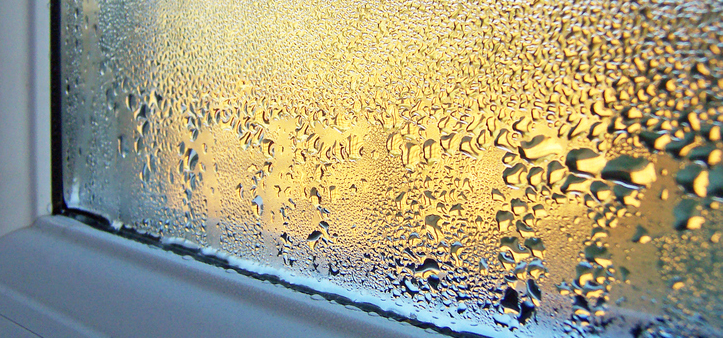
When is condensation an issue?
20 October 2016
Condensation can be an issue at this time of year as temperatures start to fall. Depending on where the condensation occurs, it may be completely normal and nothing to worry about or in some cases it is worth investigating. As autumn gets into full swing, some people grow particularly concerned about its appearance on more advanced glass products and insulated glass units.
Why does condensation form on windows?
Condensation forms when the limit to the amount of water vapour the atmosphere can hold is reached. The higher the temperature the more water vapour can be absorbed. That’s why in places where it’s colder such as close to windows, condensation forms, as less vapour is needed for the atmosphere there to become saturated.
Compared to the past, we now have warmer rooms thanks to improved living conditions but that has also meant reduced ventilation. Water vapour is produced by normal living activities such as breathing, cooking and washing up. The vapour has often nowhere to go which results in rooms having a naturally higher level of humidity. This can therefore lead to the formation of condensation on windows when the temperatures are cooler.
Low-E glass
Low-E glass has a microscopically thin, transparent coating which reflects heat – improving the energy efficiency of a building, helping keep the interior warm and energy bills down. It also reflects infrared rays from the sun to maintain a comfortable internal temperature without any impact on light in hotter months.
The coating limits heat exchange across the space between the two panes of glass in an insulated glass unit, helping to keep the inner pane of glass warmer, decreasing the instances when condensation can form.
Condensation on Low-E glass
Surface condensation on the outside of glazing is a phenomenon that is occasionally seen at night and in early to mid-morning hours on well-insulated glass. It is caused by heat loss to the sky.
This occurs when clear, windless weather conditions are prevailing. When these conditions combine with significant temperature fluctuations, usually occurring in spring and autumn, the effect is at its most pronounced. In other words, it occurs when mild temperatures can drop significantly to a much cooler level as night falls and dawn arrives. It is less likely to be seen in summer and winter as the temperatures are either warm or cold and are less prone to fluctuate.
It is important that the phenomenon of external condensation is not considered to represent poor quality double glazed units. Rather, it is proof of very good thermal insulation and that your windows are working as they should. Providing condensation is external to the insulated glass unit and not contained within the cavity then there is nothing to be concerned about.
If you want to make sure the glass used in your project or home is high-quality then get in touch and our expert team can recommend the best flat glass products and insulated glass units for you.
